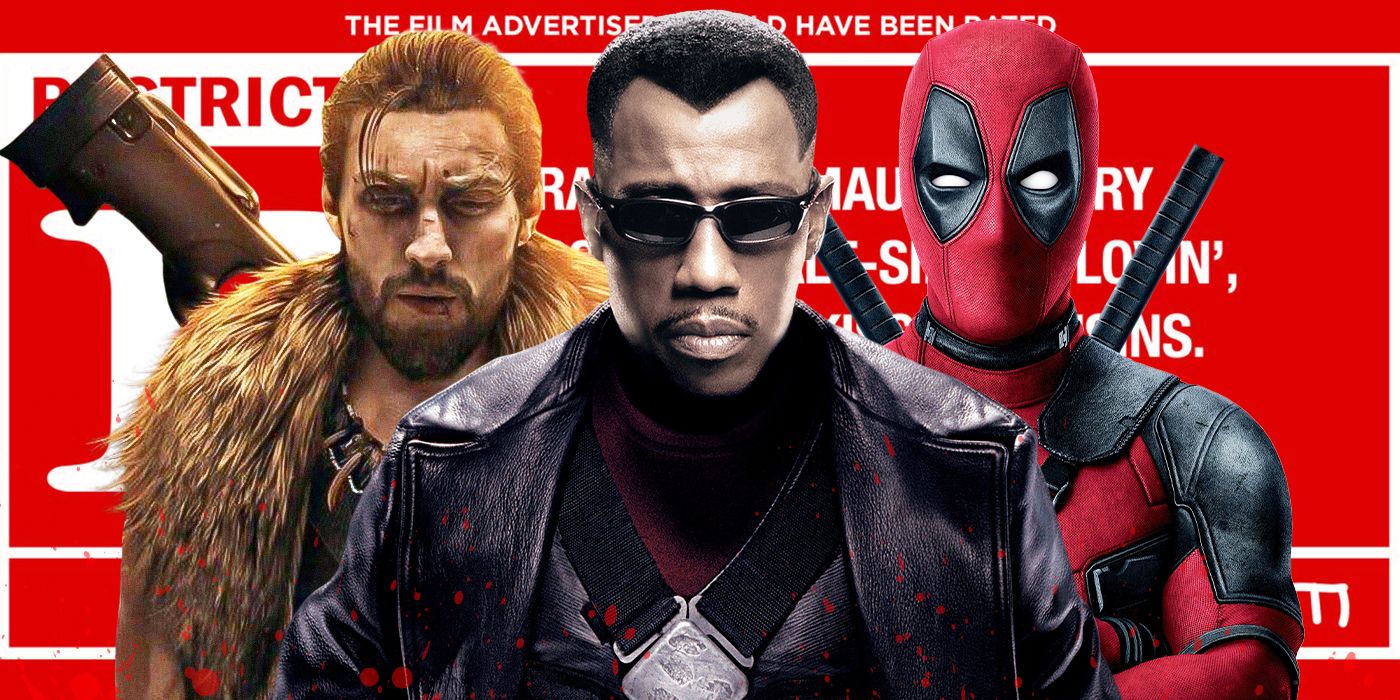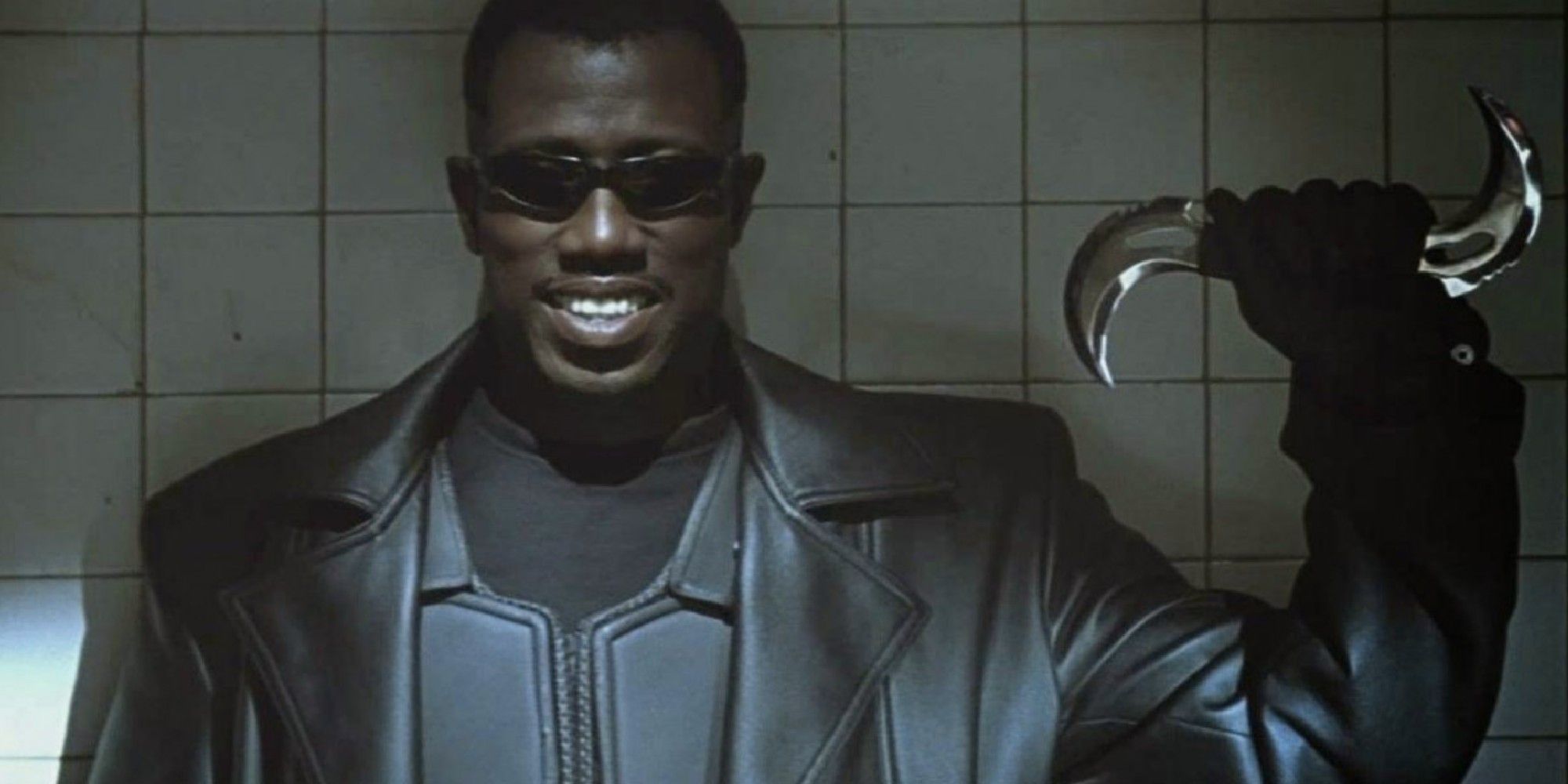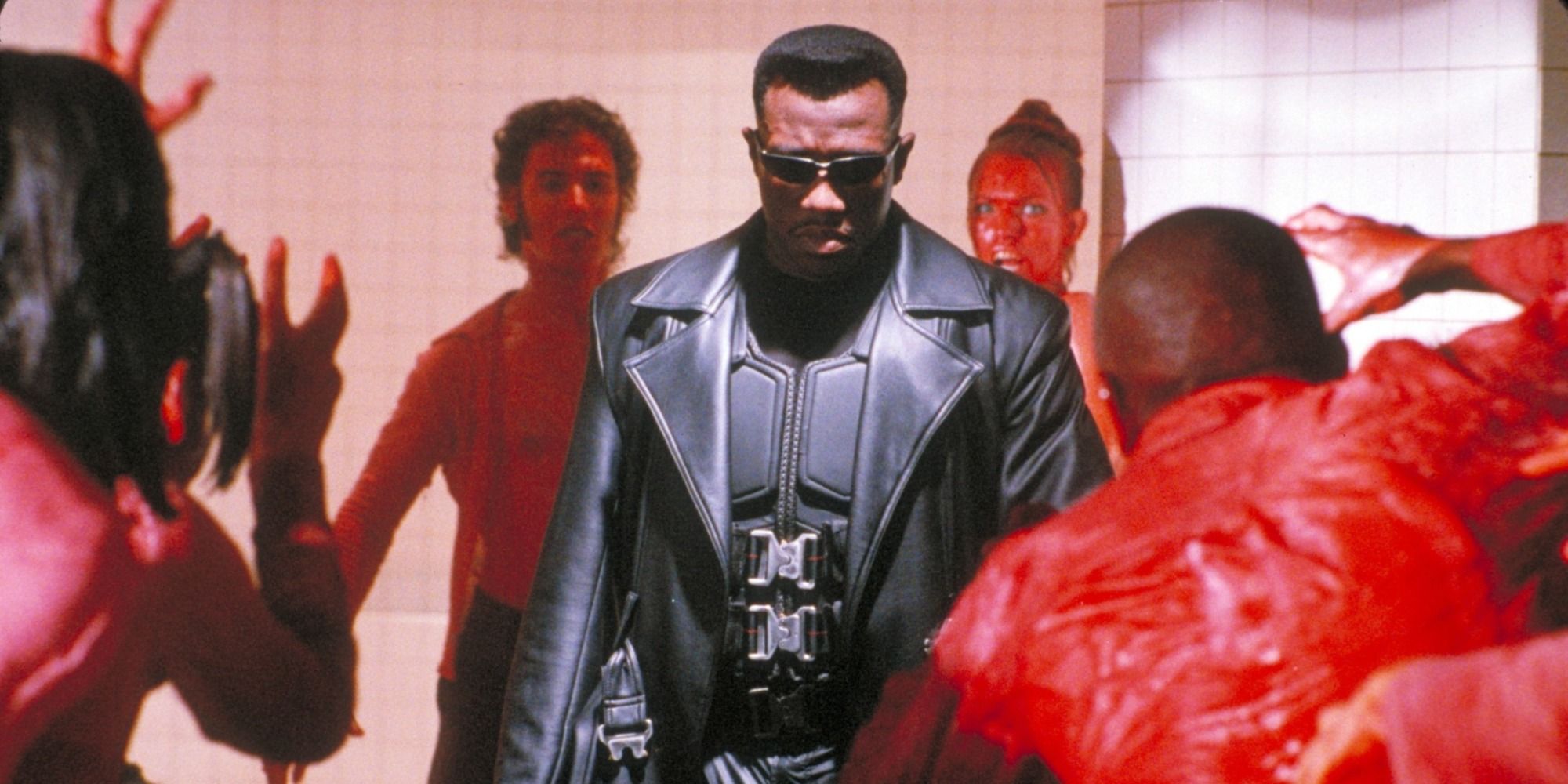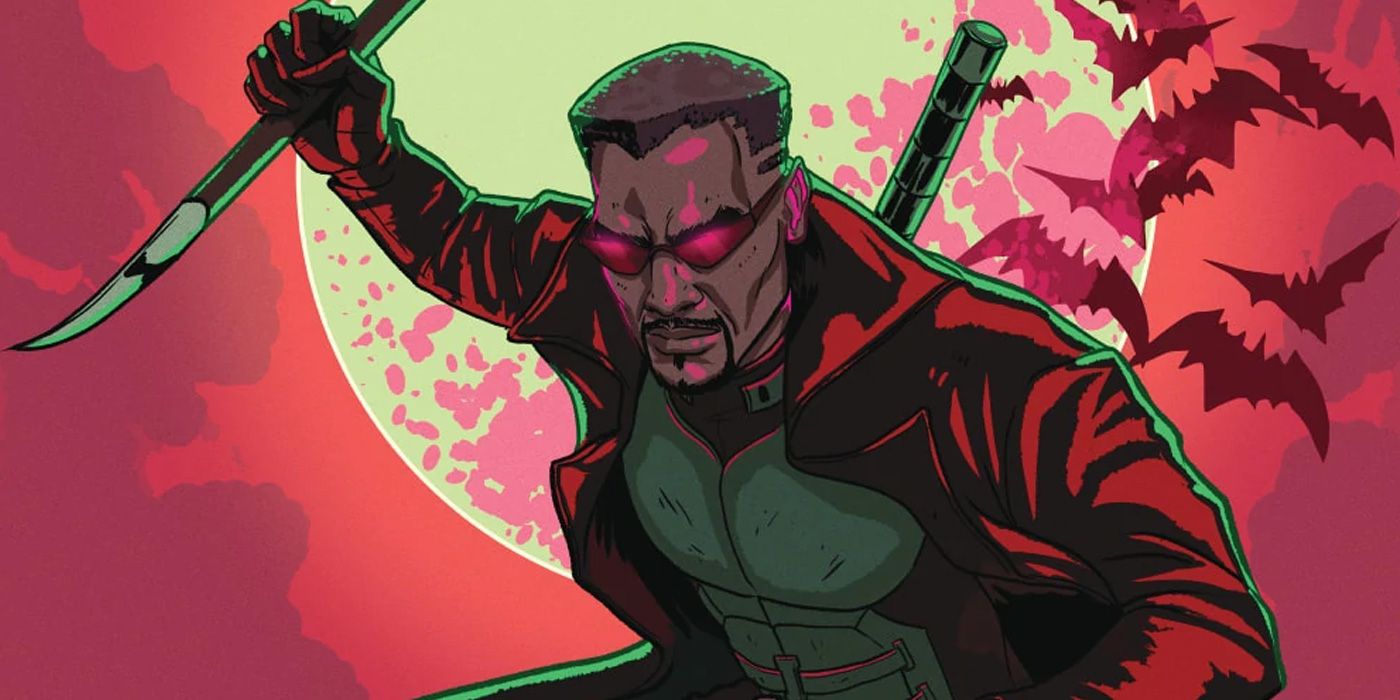When it comes to R-rated superhero movies, big studios often take one of two paths. Either treat everything as a joke like in Deadpool or turn their films into a bleak exploration of how messed up life would be if superheroes existed, such as in Watchmen and Brightburn. While there's absolutely nothing wrong with these approaches, it's hard to find an R-rated production that managed to find a good balance between the adult themes that comes with an R-rating while still delivering the over-the-top fun that makes comic books so thrilling. However, in 1998, Wesley Snipes’ Blade did just that. And as the Marvel Cinematic Universe grows beyond its PG-13 formula, the original Blade adaptation offers the perfect template for the MCU to go R-rated while keeping an internal cohesion.
What Is Wesley Snipes ‘Blade’?
For those readers too young to have experienced the thrilling release of 1998's Blade, it might be hard to imagine how groundbreaking the movie was. While some people like to say the MCU's grandfather was 2000's X-Men or 2002's Spider-Man, it was Blade who paved the way for the superhero hype with a Black-led and R-rated comic book adaptation focused on a D-list superhero. Sure, the money made by X-Men and Spider-Man was decisive for Marvel Studios to start thinking about the MCU. Still, Blade proved you could turn an unknown character into a pop culture icon, which is exactly the path the MCU took with Iron Man.
Blade proved you could have critical acclaim and commercial success with a Marvel superhero, something rarely achieved. And thanks to Snipes' definitive performance as the titular vampire hunter, Blade became one of the most beloved heroes from the House of Ideas. Blade was so impactful that even the comic book version of the character was modified to match the big screen version. That's how, instead of a human immune to vampirism, Blade became a half-vampire. In addition, instead of an almost unscrupulous fanatic in his hunt for bloodsuckers, the Daywalker learned to work as a team. That was another valuable lesson for Marvel Studios, as movie adaptations can help make even D-list characters more interesting by changing the canon in favor of a stronger emotional core. Blade's success taught Marvel Studios a lot about comic book adaptations, and now that Deadpool 3 will open the MCU for R-rated stories, Blade can teach them even more.
Violence Is 'Blade's Method of Storytelling
The first thing anyone trying to make an R-rated MCU movie should understand is that violence cannot be an end, but it should be a means to better storytelling. Blade is filled to the brim with blood and stylish sword fighting. However, the violence serves a bigger purpose than pure spectacle. Just like in The Boys or Invincible, the violence in Blade never gets in the way of the story, but instead helps the audience to understand how ruthless vampires can be. In addition, it illustrates how disconnected Blade became from his humanity, so much so that he's willing to do gruesome things to win his one-man war against the bloodsuckers.
Marvel Comics has its fair share of ultraviolent characters, some of whom are about to make their MCU debut. Daredevil, for instance, has always been about gritty ninja duels. As for the Punisher, the vigilante is literally an executioner who takes out his targets with extreme prejudice. And what can we say about the Wolverine, a killer so ruthless that his superhero title is questioned by friends and foes alike? Violence and brutality are part of these characters' history. So, while we can still bring them into the MCU under a PG-13 rating, by going full R-rated Marvel Studios could turn violence into a storytelling tool, just like Blade did in 1998.
After somewhat lighthearted appearances in Spider-Man: No Way Home and She-Hulk: Attorney at Law, Charlie Cox is coming back as Daredevil for the Born Again series. The show will also bring back Jon Bernthal as Frank Castle. Finally, Hugh Jackman's Wolverine has a main role in Deadpool 3. So, the moment is ripe for the MCU to get more creative with violence, by using the R-rating to its most.
‘Blade’ Never Forgets Its Comic Book Roots
Yes, Blade is filled with slick action set pieces in which Snipes’ Daywalker destroys his enemies. But even though the violence of Blade turns it into an adult-oriented story, the movie never loses perspective of its comic book roots. Let's be honest, comic books are weird. And that's because comic books are both a storytelling medium and a support for the visual arts. As much as we enjoy the stories comic books tell us, the industry would never make as much money as it does without colorful costumes and wacky designs.
Many R-rated superhero movies and TV shows try to make things too realistic, mistaking the weirdness of comic books as something for children. Still, as adults, we also like flashing lights blinking on the screen and the thrill of a straightforward hero vs. villain story that doesn't forget to be fun. Just because R-rated media is aimed at adults, it doesn't mean it has to be depressing or bleak. Furthermore, while there is definitely a space for R-rated productions in the MCU, Marvel Studios still need to keep some tone consistency across all its movies and TV shows. This is why Blade can once more serve as a shining example.
While Blade deals with adult themes and extreme violence, the movie still feels like a superhero story. There are larger-than-life villains, special care for gadgets and costumes, and a non-stop flow of one-liners that make each combat more entertaining to watch. While Blade was developed pre-MCU, it could fit Marvel Studios' line of production. Sure, Blade shows a reality darker than most MCU movies, with Guardians of the Galaxy Vol. 3 probably being the exception. Still, it's easy to identify Blade as part of the Marvel universe because it still tries to be fun, instead of brooding.
Since Avengers: Endgame, the MCU has been struggling to keep audiences engaged and critics happy. The solution is to bet on more diversified content that can explore unique perspectives. Adding more R-rated projects and characters seems like a natural part of this process. Fortunately, Marvel Studios has the perfect template in 1998's Blade to make this transition.




